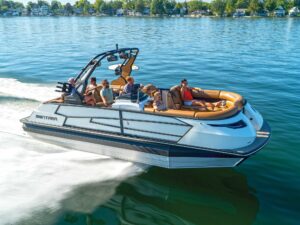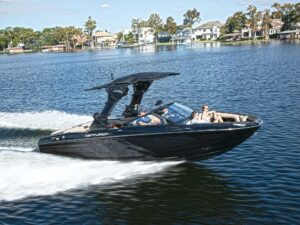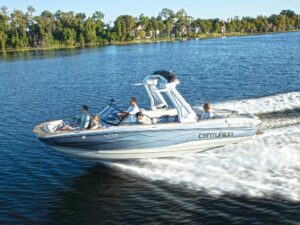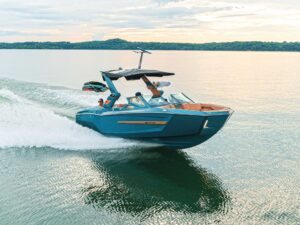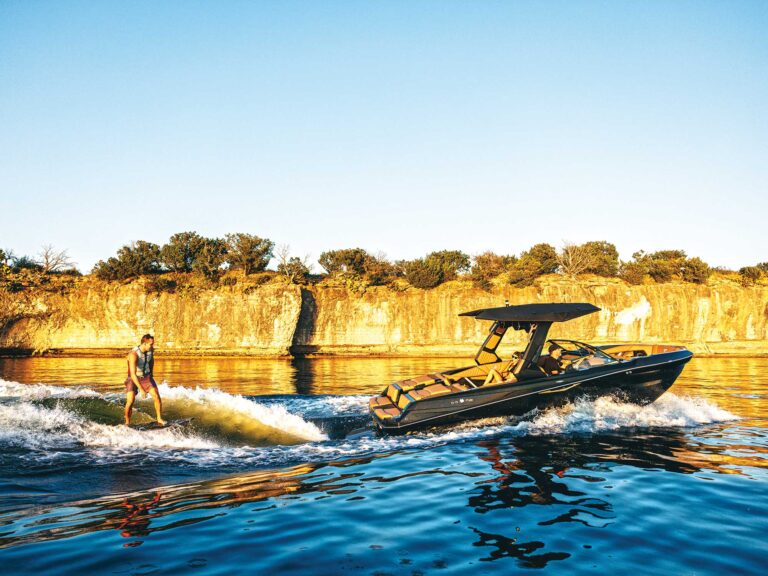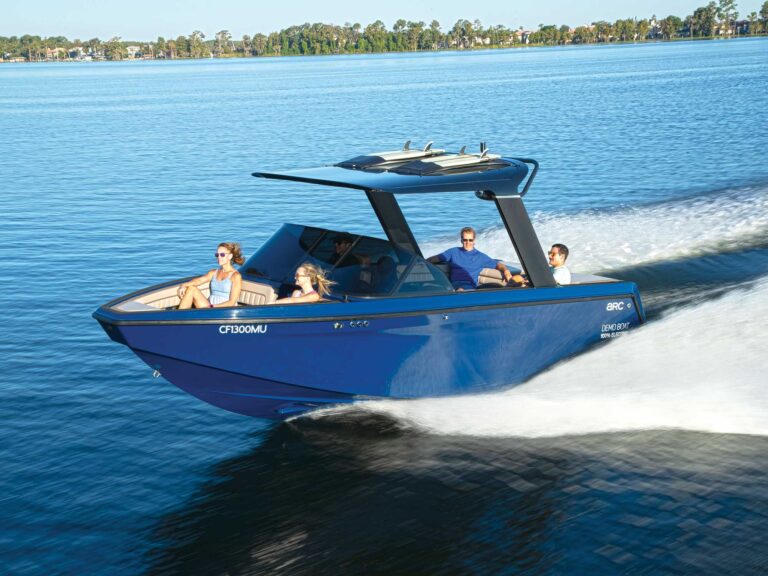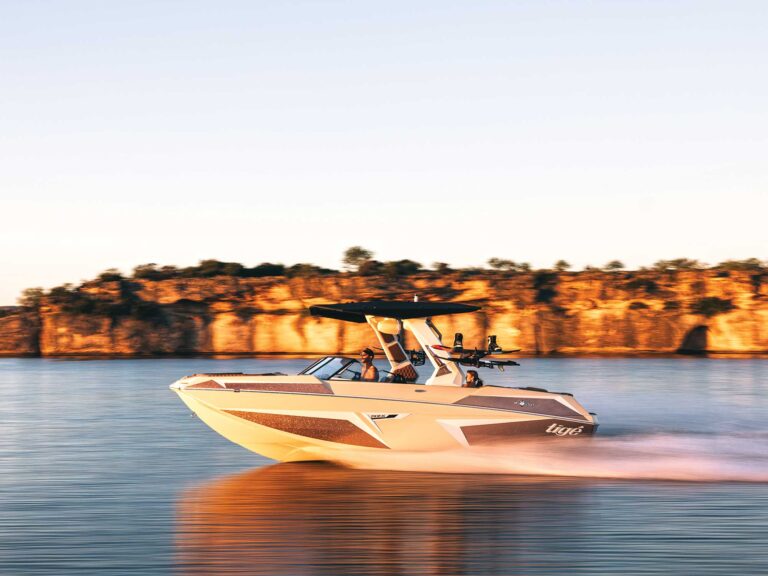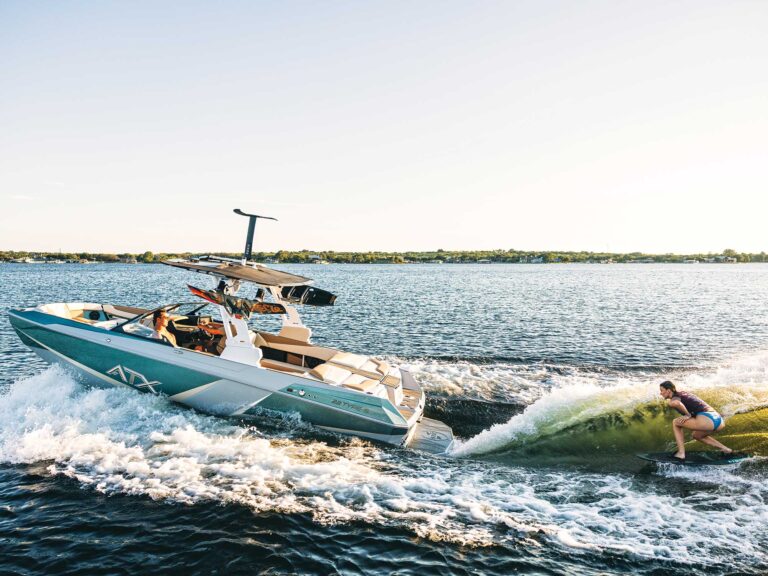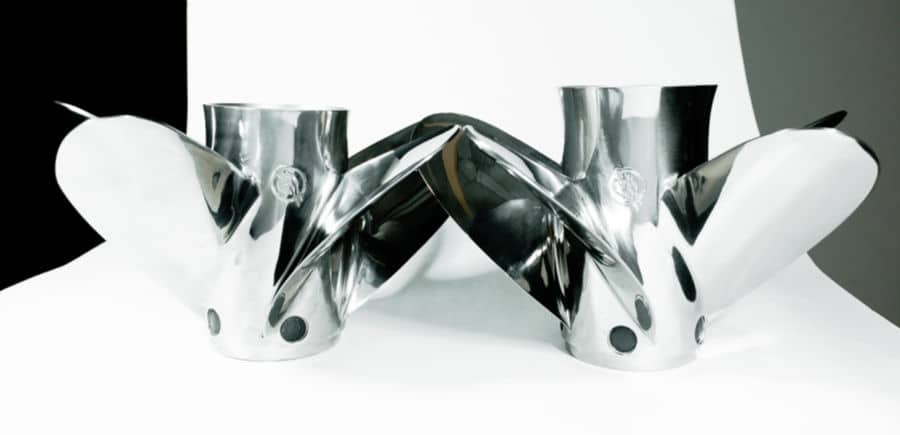
The obvious function of the barrel, or outer hub, of a propeller is to be the attachment point for the propeller blades. What is often overlooked, however, is that the length, diameter and shape of a propeller barrel can have a direct effect on boat performance.
Mercury Racing propellers currently have three barrel sizes. The smallest-diameter barrel is found on solid-hub props with broached splines like the Mercury Racing CNC Cleaver model. Barrels also come in different lengths and some have a flared trailing edge.
Mercury Racing offers different barrel lengths and shapes on the Bravo I, Maximus, and MAX5 propeller families. The longer and wider the barrel, the more stern lift the propeller will generate. Adding flair to the aft end of the barrel also generates stern lift; a long barrel with a flare acts as a miniature trim tab, providing lift and improving hole shot. This is why, for example, the Mercury Racing Bravo I XC has a longer barrel with a flared trailing edge – both features help fishing boats used in the Texas Gulf Coast market plane off quickly in very shallow water, and hold plane at lower speeds as anglers sight fish.
A long propeller barrel can negatively impact top-speed performance in many fast boat applications when stern lift created by the barrel causes the boat to run too flat. The Mercury Racing Bravo I FS, Bravo I XS, Bravo I OC, MAX5, MAX5 ST, and Maximus ST all feature shortened and tuned barrels to dial back stern lift. The Bravo I OC and MAX5 ST represent the most extreme versions of this treatment, featuring very short barrels that perform especially well when an ultra-lightweight boat is paired with high-horsepower outboard power.
The barrel is not the only part of the propeller that provides lift. But if a propeller is generating too much lift due to diameter or blade count, the barrel is often the first part of the propeller to “hit the chopping block.”

